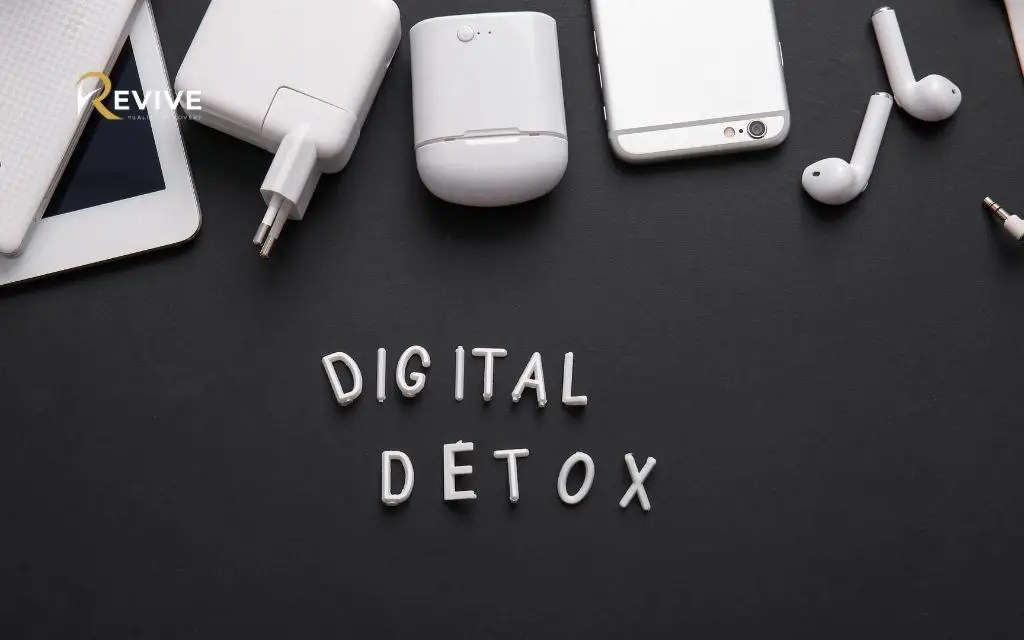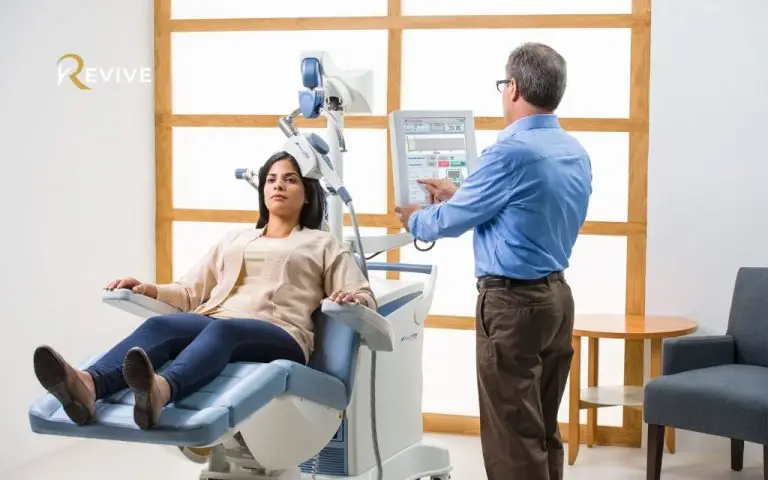Do you reach for your phone the moment you feel triggered? You’re not alone. Research reveals that excessive screen time can prevent your brain from processing traumatic memories, keeping you trapped in cycles of anxiety and hyperarousal. If scrolling social media makes your PTSD symptoms worse, or if news content leaves you feeling retraumatized, you’re experiencing what trauma specialists call the digital paradox.
Here’s the truth: intentional digital detox practices, combined with trauma therapy in Denver, can reduce anxiety, improve sleep, and help your nervous system heal. At Revive Health Recovery, we’ve watched clients transform their recovery by setting simple digital boundaries. This trauma and digital detox guide explains why your smartphone might be blocking your healing and shows you exactly how to reclaim your recovery journey through evidence-based screen time reduction.
Understanding the connection between trauma and screen time
How excessive screen time affects trauma recovery
Your brain processes trauma during moments of rest and reflection. Constant digital stimulation interrupts this natural healing process. When you experience trauma, your nervous system gets stuck in survival mode. Screen time keeps it there.
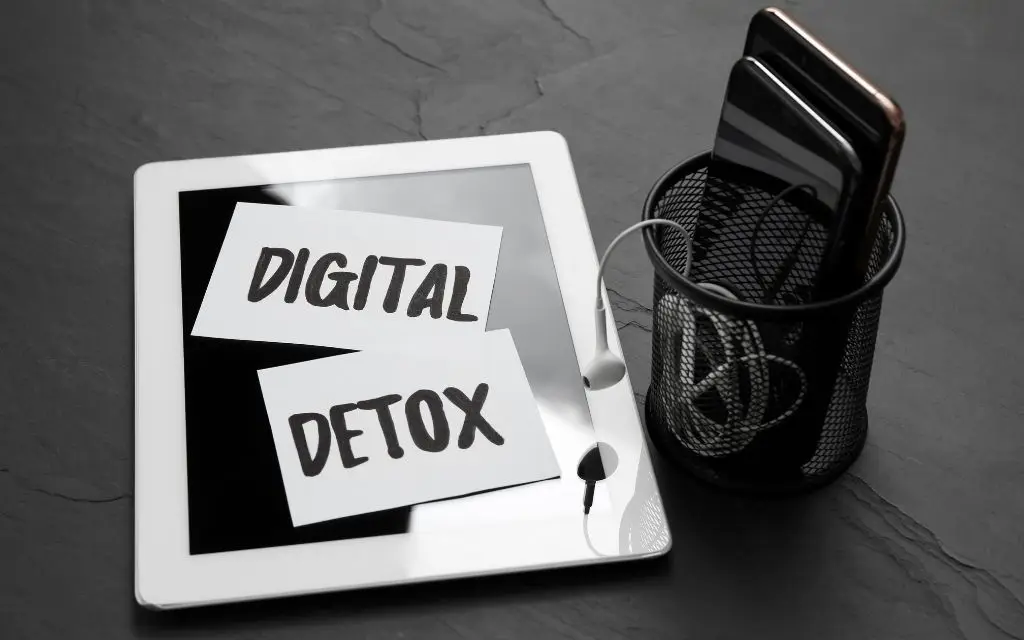
Research from the National Institutes of Health shows that excessive smartphone use prevents habituation to fear cues. This means your PTSD symptoms can actually worsen with increased screen time. Screen time often becomes avoidance behavior. Instead of sitting with difficult emotions, you distract yourself with endless content. This prevents the emotional processing necessary for trauma recovery.
The impact is significant. People who use screens more than six hours daily outside of work show 40% worse outcomes in trauma treatment compared to those who limit recreational screen time to two hours.
The digital paradox for trauma survivors in Colorado
Technology serves as both resource and risk during trauma recovery. Telehealth makes trauma therapy accessible. Meditation apps guide your breathing. Online support groups connect you with others who understand.
However, digital platforms also expose you to constant triggers. Comparison culture on social media damages your self-esteem. Information overload overwhelms your already dysregulated nervous system. News cycles create secondary trauma through repeated exposure to disturbing content.
Denver’s tech-savvy culture makes this especially challenging. Colorado residents spend an average of seven hours daily on screens, above the national average. The solution lies in intentional use. Digital boundaries become part of your trauma treatment plan, not separate from it. This approach recognizes technology’s benefits while protecting your nervous system from constant stimulation.
Common signs screen time is sabotaging your healing
| Warning Sign | What It Means | Quick Action |
| Morning anxiety after scrolling | Stress response activated before day starts | Keep phone outside bedroom |
| Evening screen use disrupting sleep | Nervous system can’t wind down | No screens 1 hour before bed |
| Social media comparison | Shame and feeling behind | Unfollow triggering accounts |
| News consumption anxiety | Vicarious trauma building | Limit news to 15 minutes daily |
| Physical tension while scrolling | Body in stress mode | Set hourly screen break reminders |
| Breath-holding while on device | Fight-or-flight activation | Practice conscious breathing |
| Time loss and dissociation | Disconnection from present moment | Use app timers and limits |
The science behind digital detox for PTSD and trauma
What research tells us about digital detox benefits
Studies from the National Institutes of Health demonstrate measurable improvements in depression and anxiety symptoms after just one week of reduced screen time. Participants who limited recreational device use to 30 minutes daily showed significant mood improvements compared to control groups.
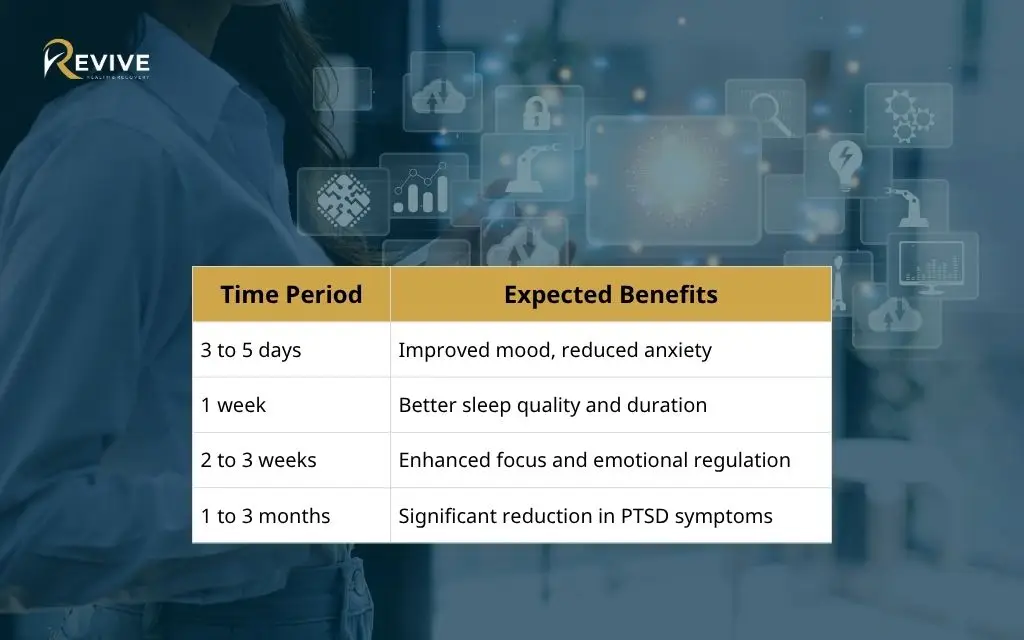
Digital detox impacts sleep quality dramatically. Research tracking trauma survivors found that removing screens from bedrooms improved sleep latency by an average of 23 minutes. Better sleep directly supports trauma recovery because your brain processes emotional memories during REM sleep.
The effects on focus and emotional regulation matter especially for trauma survivors. Constant digital interruptions fragment your attention, making it harder to engage in therapy exercises or mindfulness practices. When you reduce screen time, your ability to stay present improves within days.
How screen time triggers your trauma response
Social media creates vicarious trauma for survivors. Your brain activates similar pathways as direct trauma. Repeated exposure can create new PTSD symptoms.
Your amygdala can’t distinguish direct from secondhand trauma. Scrolling maintains hypervigilance even when you’re physically safe. Notifications trigger stress responses dozens of times daily.
Online triggers appear suddenly and unpredictably. Physical triggers are usually predictable and avoidable. This constant exposure makes traditional treatment less effective. Digital boundaries are essential for trauma healing.
Somatic awareness: What you lose in the scroll
Body-centered healing is essential in trauma recovery. Your trauma lives in your nervous system. Effective treatment reconnects you with physical sensations.
Screens disconnect you from your breath and posture. This prevents somatic awareness needed for trauma therapy. Excessive screen time makes evidence-based treatments less effective.
Trauma recovery happens in the present moment. Your device pulls you away from present awareness. Each moment on screens prevents the healing process.
Evidence-based digital detox strategies for trauma survivors
Creating digital boundaries that support healing
Tech-free time zones:
| Time Period | Boundary | Purpose |
| First hour awake | No devices | Start day grounded, not reactive |
| Meal times | Phone away from table | Mindful eating and connection |
| 1 hour before bed | Screens off | Allow nervous system to wind down |
| Weekends 8am to 10am | Device-free mornings | Extended present-moment practice |
Physical boundaries work better than willpower alone. Create tech-free zones in your Denver home. Keep your bedroom device-free. This space becomes your sanctuary for rest and intimacy. Consider making your dining area screen-free too, allowing meals to be mindful experiences rather than distracted ones.
Notification management gives you back control. Audit every app asking for your attention. Turn off all non-essential notifications. You don’t need to know instantly about every like, comment, or news update. Check apps intentionally during designated times rather than reacting to constant interruptions.
Setting boundaries with news and social media consumption protects you from vicarious trauma. Limit news checking to once daily for 15 minutes maximum. Curate your social media feeds ruthlessly, unfollowing accounts that trigger anxiety or comparison. Remember that staying informed doesn’t require constant consumption of disturbing content.
Communicating your boundaries to friends and family prevents misunderstandings. Let people know you’re reducing screen time as part of trauma recovery. Set expectations about response times. True friends will support your healing rather than demanding constant digital availability.
Mindful technology use during trauma recovery
Body-centered apps support nervous system regulation when used intentionally. Apps like Insight Timer for meditation or Calm for guided breathing can enhance your trauma therapy in Denver. The key is using them purposefully rather than scrolling mindlessly between exercises.
Technology enables creative expression and journaling that supports healing. Voice memo apps let you process emotions verbally when writing feels hard. Photo journals document your recovery journey. Digital art apps offer creative outlets for expressing what words cannot capture. These uses of technology serve your healing rather than sabotaging it.
Curating supportive digital content:
Instead of random scrolling, intentionally follow trauma-informed therapists, body-based practitioners, and recovery advocates. Your feed should inspire hope rather than trigger comparison or despair. Unfollow accounts that create anxiety, shame, or inadequacy.
Apps for tracking screen time provide awareness. Use built-in features on iPhone (Screen Time) or Android (Digital Wellbeing) to see your actual usage. This data often surprises people. What feels like occasional checking might be hours daily. Awareness is the first step toward change.
Technology in nature creates unique healing opportunities. Mindful photography during hikes in Denver’s parks or the nearby Rocky Mountains keeps you present while capturing beauty. Nature identification apps deepen your connection to Colorado’s environment. These uses combine the benefits of nature exposure with intentional technology.
The digital day of rest: A complete reset
Planning your first 24-hour digital detox requires preparation. Choose a day with minimal work obligations. Inform people who might need to reach you about your offline period. Provide an emergency contact method if necessary, such as a friend’s phone number. Preparation reduces anxiety about disconnecting.
Denver activities for tech-free days:
Hike the trails at Red Rocks or Mount Falcon. Visit the Denver Botanic Gardens. Explore art galleries in the Santa Fe Arts District. Attend a live music performance. Cook a new recipe. Read a physical book in a coffee shop. Practice yoga or meditation. These experiences reconnect you with embodied presence.
Managing FOMO and withdrawal symptoms is part of the process. The first few hours feel uncomfortable. You’ll reach for your phone habitually. Your mind will generate urgent reasons to check. Recognize these as withdrawal symptoms, not genuine emergencies. They pass within a few hours.
Gradual versus complete detox approaches work for different people. Some benefit from the shock of complete disconnection. Others need gradual reduction to manage anxiety. Start with whatever feels doable. A few hours device-free is better than nothing. Build from there based on your comfort level.
Benefits reported by trauma survivors who practice regular digital days of rest include improved mood, better sleep, reduced anxiety, enhanced creativity, and stronger in-person relationships. Many describe feeling more present in their bodies and more connected to the physical world around them.
Practical screen time reduction techniques
| Technique | How to Implement | Expected Result |
| Phone in another room | Charge device outside bedroom, use alarm clock | Eliminates evening scrolling and morning phone-checking |
| Grayscale mode | Switch in accessibility settings | Reduces phone’s visual appeal and reward value |
| Time-blocking | Designate specific windows for checking devices | Prevents constant context-switching |
| Grounding replacement | Body scan instead of phone check | Redirects habit toward healing |
| Screen-free morning routine | First hour: movement, breakfast, journaling, quiet time | Establishes regulated nervous system baseline |
Integrating digital wellness with trauma therapy in Denver
Why professional trauma treatment enhances digital detox success
Self-help alone has limitations when healing from trauma. Professional therapy identifies why you avoid emotions through devices. Your therapist helps develop healthier coping strategies for triggers.
EMDR therapy reprocesses memories triggered by online content. CBT identifies thought patterns driving compulsive phone use. Somatic therapies rebuild body awareness that screens diminish. A trauma therapist provides accountability and adjusts strategies effectively.
What makes Denver’s approach to trauma and digital wellness unique
Denver leads in integrated care for trauma and digital wellness. Treatment centers here pioneer combining both approaches successfully. Digital detox therapy groups create community around this challenge.
Colorado’s nature access sets the state apart completely. The Rocky Mountains and sunshine support outdoor healing activities. Hiking and skiing replace screen time with nervous system regulation.
How Revive Health Recovery addresses digital overwhelm in trauma treatment
Our integrative trauma treatment addresses digital habits and symptoms together. We discuss your technology use and triggers during assessment. Personalized digital wellness plans become part of your treatment.
We offer EMDR therapy, trauma-focused CBT, and somatic experiencing. You learn breathing techniques and grounding exercises during sessions. These become alternatives to reaching for your phone when triggered.
Overcoming common challenges in digital detox
Managing withdrawal and FOMO
Understanding digital dependency helps normalize your experience. Smartphones are designed to be addictive. Apps use sophisticated psychological techniques to keep you engaged. Recognizing this isn’t personal weakness but rather response to intentional design reduces shame around your struggle.
Digital detox withdrawal timeline:
| Days 1 to 2 | Anxiety, restlessness, frequent urge to check phone |
| Days 3 to 5 | Peak discomfort, irritability, boredom |
| Days 6 to 10 | Symptoms decrease, moments of calm increase |
| Weeks 2 to 3 | New habits feel more natural, anxiety subsides |
| Month 1 plus | Sustainable patterns established, benefits clear |
Strategies for handling anxiety when unplugged start with self-compassion. Notice the anxiety without judgment. Use grounding techniques learned in trauma therapy to stay present with discomfort. Remind yourself that this temporary anxiety leads to longer-term regulation. The discomfort means your nervous system is adjusting.
Reframing FOMO as JOMO transforms your perspective. Fear of Missing Out keeps you scrolling despite feeling worse. Joy of Missing Out recognizes that what you’re gaining matters more than what you’re missing. Missing curated social media moments means being present for real life moments. This reframe makes digital boundaries feel like gain rather than loss.
Maintaining connection without digital overwhelm
Balance communication needs with digital wellness through intentionality. Designate specific times for checking messages and email. Return calls rather than texting when possible. Voice connection feels more satisfying than text exchanges.
Set expectations with loved ones to prevent conflict. Explain you’re reducing screen time for mental health. Share your new availability windows clearly. People who care will support your healing journey.
Create emergency contact plans during detox periods. Give trusted contacts your therapist’s number or crisis line. Let close family know how to reach you. Finding in-person community in Denver replaces online connection effectively.
Preventing relapse into old digital habits
Recognizing triggers for excessive screen time gives you power to choose differently. Notice what emotions, situations, or times of day make you reach for your phone. Boredom? Anxiety? Loneliness? End of workday transition? Identifying patterns allows you to create specific strategies for each trigger.
Trigger response alternatives:
| Trigger | Old Pattern | New Response |
| Boredom | Mindless scrolling | 5-minute walk or stretching |
| Anxiety | News checking | Breathing exercise or grounding |
| Loneliness | Social media browsing | Call a friend or journal |
| Transition stress | Phone games | Brief meditation or tea ritual |
| Avoidance | Video watching | Physical activity or creative outlet |
Long-term maintenance strategies include regular check-ins with your screen time data, periodic 24-hour digital detoxes, and ongoing mindfulness about your relationship with technology. Digital wellness isn’t a one-time achievement but an ongoing practice that evolves with your recovery.
When to seek additional support includes times when screen time increases despite your best efforts, when you feel depressed or anxious about your device use, or when digital habits interfere with therapy progress or daily functioning. Reach out to your therapist or contact Revive Health Recovery at (303) 268-4655 for support.
Creating your personalized digital detox plan
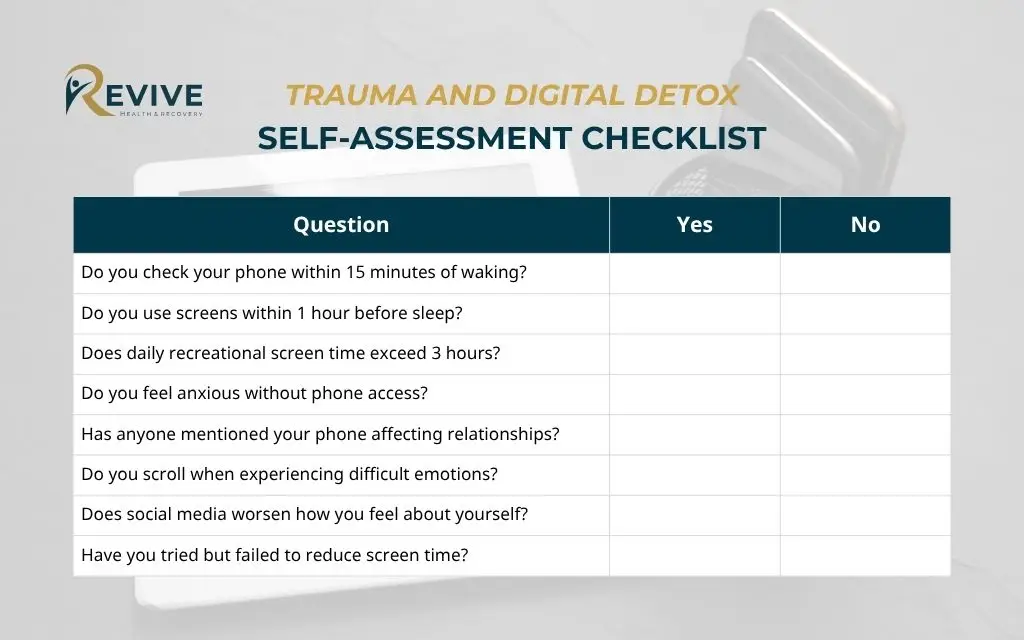
Assessing your current digital habits
Trauma and digital detox: Self-assessment checklist:
| Question | Yes | No |
| Do you check your phone within 15 minutes of waking? | ||
| Do you use screens within 1 hour before sleep? | ||
| Does daily recreational screen time exceed 3 hours? | ||
| Do you feel anxious without phone access? | ||
| Has anyone mentioned your phone affecting relationships? | ||
| Do you scroll when experiencing difficult emotions? | ||
| Does social media worsen how you feel about yourself? | ||
| Have you tried but failed to reduce screen time? |
If you answered yes to four or more questions, digital habits are likely interfering with your trauma recovery.
Tracking your screen time baseline:
Use your phone’s built-in tracking for one full week before making changes. Note total daily screen time, most-used apps, and peak usage times. This baseline shows where to focus your efforts.
Identifying your specific triggers and patterns:
Review your tracking data. When do you use devices most? What apps consume the most time? What emotions or situations precede heavy use? These patterns reveal your unique relationship between screen time and trauma responses.
Understanding your trauma-technology relationship:
Reflect on how technology intersects with your trauma symptoms. Does news trigger you? Does social comparison worsen depression? Do devices help you avoid processing emotions? Understanding these connections allows targeted intervention.
Setting realistic goals for screen time reduction
SMART goals framework for digital wellness:
| SMART Element | Your Goal Example |
| Specific | No devices after 9 PM on weeknights |
| Measurable | Track weekly screen time averages |
| Achievable | Start with 30-minute reduction, not 4-hour cuts |
| Relevant | Address your specific trauma symptoms |
| Time-bound | Review progress at 1 week, 1 month, 3 months |
Starting small versus going cold turkey depends on your personality and trauma symptoms. Some people thrive on dramatic change. Others need gradual adjustment to avoid overwhelm. Both approaches work when matched to your needs.
Adjusting goals based on your trauma symptoms matters. If hypervigilance is your primary symptom, focus on notification management. If avoidance drives your screen use, prioritize replacing scrolling with emotion processing techniques. Let your specific symptoms guide your priorities.
Celebrating progress milestones keeps you motivated. Acknowledge improvements without waiting for perfection. Celebrate your first device-free evening, your first digital day of rest, or reducing screen time by even 30 minutes daily. Progress, not perfection, drives sustainable change.
Building a support system
Involving family and friends creates accountability and reduces friction. Share your goals and ask for support. Request that people respect your tech-free times. Consider inviting others to join you in digital wellness practices.
Joining digital detox communities in Denver connects you with others making similar changes. Look for meetup groups focused on digital wellness, mindfulness, or technology-free social activities. Community makes change easier and more enjoyable.
Professional support options through trauma-informed therapy provide expert guidance. Your therapist can help integrate digital wellness with trauma treatment, troubleshoot challenges, and adjust strategies based on your progress. This professional partnership accelerates success.
Accountability partners offer mutual support. Find someone also working on digital boundaries. Check in weekly about successes and struggles. This partnership creates motivation and normalizes the difficulty of changing ingrained habits.
Real success stories: Digital detox in Denver trauma recovery
Maria reduced her daily screen time from seven hours to two hours after three months of combining trauma therapy with digital boundaries. Her sleep improved within one week. Anxiety decreased over the following month. She reported feeling more present with her children and less triggered by social media content. Her therapist noted significant improvement in her ability to engage with EMDR therapy once she stopped using her phone to avoid difficult emotions.
James entered treatment for PTSD related to military service. His screen time averaged nine hours daily, mostly news consumption and gaming. Within two weeks of implementing a digital detox plan, his hypervigilance symptoms decreased noticeably. He reported the first restful sleep in months after removing devices from his bedroom. By three months, he had reduced screen time to four hours daily and reported feeling more hopeful about recovery than at any point since his discharge.
Recovery progress timeline:
Most clients at Revive Health Recovery notice improved sleep within one week of digital boundaries. Mood improvements appear within two to three weeks. Significant reduction in trauma symptoms typically occurs between two and four months when digital wellness practices combine with evidence-based trauma therapy. The integration of both approaches accelerates healing compared to therapy alone.
These success stories share a common factor. None of these individuals achieved lasting change through willpower alone. Professional trauma treatment provided the foundation, teaching emotion regulation skills and processing traumatic memories. Digital wellness practices enhanced treatment effectiveness by protecting the nervous system space needed for healing to occur.
FAQs about trauma and digital detox
Can reducing screen time really help with PTSD symptoms?
Yes. Research demonstrates that excessive screen time worsens PTSD symptoms by preventing trauma memory processing, maintaining hyperarousal, and creating exposure to triggering content. Reducing screen time allows your nervous system to regulate, improves sleep quality essential for trauma processing, and decreases exposure to vicarious trauma. Combined with professional trauma therapy in Denver at Revive Health Recovery, digital detox practices significantly improve PTSD symptoms including hypervigilance, sleep disturbance, and emotional regulation difficulties. Call us at (303) 268-4655 to learn how we integrate digital wellness with trauma treatment.
How long should I do a digital detox for trauma recovery?
Digital detox isn’t a one-time event but an ongoing practice. Start with a 24-hour device-free period to experience the benefits. Then establish sustainable daily boundaries like device-free mornings and evenings. Research suggests maintaining reduced screen time for at least three months produces lasting benefits for trauma recovery. At Revive Health Recovery, we help you build personalized digital wellness practices that fit your life and support your specific trauma treatment goals. Contact us at contact@revivehealthrecovery.com for a consultation.
What if I need my phone for work or emergencies?
You can maintain necessary connectivity while protecting your recovery. Separate work and personal phone use through focused time blocks. Use “Do Not Disturb” settings with exceptions for specific emergency contacts. Keep your phone accessible but not in constant view. The goal isn’t eliminating all technology but creating intentional boundaries that prevent constant stimulation. Your trauma therapist at Revive Health Recovery can help design a plan that accommodates your work requirements while supporting nervous system regulation.
Will I feel worse before I feel better during a digital detox?
Many people experience withdrawal symptoms during the first three to five days of reduced screen time. You might feel anxious, restless, or bored. These symptoms indicate your nervous system adjusting to less stimulation. They typically peak around day two or three, then gradually improve. If symptoms feel overwhelming or you experience increased trauma symptoms, contact Revive Health Recovery immediately at (303) 268-4655. Our team can adjust your approach and provide additional support during this transition.
How is digital detox different for trauma survivors compared to others?
Trauma survivors face unique challenges because screen time often serves as avoidance of difficult emotions and memories. Your nervous system may be more sensitive to the dysregulating effects of constant stimulation. Additionally, you’re more vulnerable to vicarious trauma from online content. This means digital boundaries must integrate with trauma therapy rather than existing separately. At Revive Health Recovery, our trauma-informed approach addresses both your relationship with technology and the underlying trauma driving compulsive use. We’re Denver’s leading center for integrative trauma treatment that includes digital wellness strategies.
Professional support for trauma and digital wellness in Denver
Why choose Revive Health Recovery for trauma treatment
Our integrative approach addresses trauma recovery in the modern world. We recognize digital overwhelm as a real obstacle to healing. This comprehensive perspective sets us apart from other centers.
What makes us different:
| Our Approach | The Benefit to You |
| Evidence-based therapies (EMDR, trauma-focused CBT, somatic experiencing) | Proven methods that address trauma at its root |
| Personalized digital wellness integration | Treatment plans that include realistic tech boundaries |
| Outpatient flexibility | Heal while maintaining work and family responsibilities |
| Holistic mind-body focus | Address nervous system, not just thoughts |
| Experienced trauma specialists | Therapists who understand technology’s impact on recovery |
| Colorado nature integration | Leverage outdoor activities for healing |
We offer EMDR therapy to reprocess traumatic memories effectively. Trauma-focused CBT changes unhelpful patterns and reconnects you. Our outpatient programs allow you to maintain daily responsibilities. Trauma lives in your nervous system, not just mind.
What to expect in your first consultation
Your first session discusses trauma history and current symptoms. We explore your relationship with technology and screen time. We’ll review your screen time data if available. This understanding guides personalized recommendations for your recovery.
Together we establish realistic goals for trauma recovery. Your treatment plan reflects your priorities and life circumstances. We’ll schedule regular therapy sessions after your consultation. You’ll leave with concrete next steps and support system.
Denver resources beyond treatment
Local support and healing opportunities:
| Resource Type | Examples in Denver Area |
| Support groups | NAMI Colorado free groups, trauma-focused weekly meetings |
| Nature healing | Red Rocks trails, City Park (330 acres), Rocky Mountain Arsenal Wildlife Refuge |
| Mindfulness centers | Denver Shambhala Center, trauma-informed yoga studios |
| Community events | Digital detox meetups, outdoor adventure groups, wellness gatherings |
Conclusion
Healing from trauma in our hyperconnected world requires more than traditional therapy. It demands intentional digital wellness practices that protect your nervous system and create space for genuine recovery. The connection between trauma and digital detox isn’t just about reducing screen time. It’s about reclaiming your body’s natural healing capacity, processing difficult emotions instead of scrolling past them, and building a life where technology serves your recovery rather than sabotaging it.
Throughout Denver and Colorado, trauma survivors are discovering that combining evidence-based trauma therapy with strategic digital detox practices accelerates healing, reduces PTSD symptoms, and restores the mind-body connection essential for lasting recovery. The strategies in this guide offer a starting point, but sustainable healing often requires professional support.
If you’re ready to break free from the cycle of digital overwhelm and truly heal from trauma, Revive Health Recovery in Denver is here to guide you. Our integrative, trauma-informed approach addresses the whole person, including your relationship with technology. Don’t let excessive screen time steal another day of your recovery.
Contact Revive Health Recovery today:
Address: 1427 S Federal Blvd, Denver, CO 80219
Email: contact@revivehealthrecovery.com
Call Us (Available 24/7): (303) 268-4655
Take the first step toward healing. Schedule your free consultation and discover how digital wellness and trauma therapy can transform your life. Your recovery is waiting.
